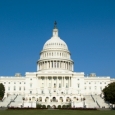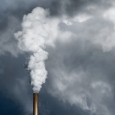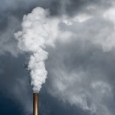Clean Air Act of 1990
The 1990 Clean air Act amendments reduced sulfur dioxide and nitrogen oxide by instituting a two phase cap and trade program. Phase I applied to the largest sources of emissions, and phase II applied to nearly all fossil fuel power plants. Additionally, this act required the complete phase-out of lead in fuels by 1995 and encouraged the use of low sulfur fuels. It mandated the use of Best Available Control Technologies (BACT) for major sources of pollution. These amendments authorized a program to control 189 toxic pollutants, including those previously regulated by the National Emission Standards for Hazardous Air Pollutants. Finally, these amendments mandated the phase-out of certain ozone depleting CFCs, including some refrigerants.
Commentary
Cry Wolf Quotes
The effects include serious long-term losses in domestic output and employment, heavy cost burdens on manufacturing industries, and a resultant gradual contraction of the entire industrial base. The irony of this bleak scenario is that these economic hardships are borne with no real assurance they would be balanced by a cleaner, healthier environment.
We just don't have the technology to comply [with Clean Air Act regulations]….[not even with] technology on the horizon.
The Chamber said that the proposed legislation would [Amending the Clean Air Act would ] vastly increase the cost and complexity [of the law by more than $20 billion a year]
[We are] certain [that] the large installed inventory which we depend upon in this country cannot survive. … We will see shutdowns of refrigeration equipment in supermarkets. … We will see shutdowns of chiller machines, which cool our large office buildings, our hotels, and hospitals.
Evidence
-
Blind Spot: The Big Three's Attack on the Global Warming Treaty
eleased during the controversy over the Kyoto Treaty, this study is a serious policy paper, exploring the intersections between transit policy and global warming. It fairly establishes the Big Three have as long history of stubborn obstructionism. (They don't like anyone telling them what to do.)
-
EPA: “Benefits and Costs of the Clean Air Act: Second Prospective Study—1990-2020”
Clean Air Act benefits total more than $2 trillion.
-
Industry Opposition to Government Regulation
The real costs of specific regulations, in chart form.
-
Jobs vs. The Environment: An Industry-Level Study
Four industries that operate under intense environmental regulatory scrutiny, but haven't lost jobs as a result.
-
Benefits and Costs of the Clean Air Act - 1990 to 2010
The monetizable benefits of the Clean Air Act are four times greater than the costs.
Backgrounders & Briefs
Good Rules: Ten Stories Of Successful Regulation
Demos looks at ten laws and rules that we take for granted.




